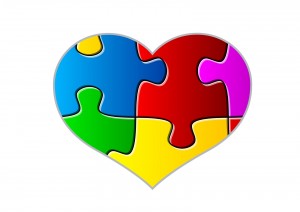 Along with the nation, my heart has been heavy this past week. Because of the place I’m at in my own journey of advocacy for right-brained learning, I felt a strong need to add my voice with those of others in starting the conversation about what needs to change. I see three main categories:
Along with the nation, my heart has been heavy this past week. Because of the place I’m at in my own journey of advocacy for right-brained learning, I felt a strong need to add my voice with those of others in starting the conversation about what needs to change. I see three main categories:
Education
Every child deserves to receive a strengths-based education. Currently, there is one scope and sequence to what and when subjects are learned. There is usually only one way a subject is taught at any given time. This doesn’t address the nine types of intelligences that Howard Gardner revealed, or each of the three main input modalities we best learn with (visual, kinesthetic, auditory), or the two main foundational brain processing preferences I speak of…left-brained or right-brained dominant learning traits, let alone account for any extras, like autism, giftedness, or mental retardation.
Schools currently operate as a cafeteria, where everyone gets the same food/education, carefully portioned out to meet food/standardized learning requirements,
instead of a serve-yourself smorgasbord where you can take what (subject, interest, or topic) appeals to you in as big a portion as you can eat/learn.
Right-brained children are creative, innovative, and imaginative learners. They need an entirely different scope and sequence to meet their needs than currently found in school. They prefer to learn different subjects in the young years than currently found in school. And they tend to learn certain subjects at a different time than outlined in school. Because of these huge differences in how they learn, right-brained children often flounder in school under its current scope and sequence. Because these are creative, intelligent children, they are often diagnosed with various learning disabilities to explain why school isn’t working for them. This begins their negative self-image about their place in the world. Solutions in education need to address this negative beginning on how some children view themselves.
From my book The Right Side of Normal:
What’s our current solution? We attempt to “fix” right-brained learners. We remediate when they don’t meet left-brained expectations (i.e., dyslexia programs). We medicate their behaviors (i.e., Ritalin). We even “jump-start” natural biological occurrences through exercises (i.e., vision tracking). There are consequences to these common “solutions.” Some children decide they are “stupid” and take that notion into adulthood. Some children develop anxiety, depression, or grow angry as they are made to feel worthless. Some children decide they “just don’t care” and “do the minimal,” as if oppositional, because they want to feel some control over the fact that they can’t live up to the left-brained expectation. Some children self-medicate through alcohol or drugs in their teen years to ease the pain of not feeling “good enough.” And some children get a learning disability label and live down to that expectation believing they are deficient in some way.
What’s a 21st century solution? Is it center-based learning where there’s a science room, a math room, a creative outlet room, a history room, a geography/culture room, etc., where there are diverse ways and topics within each to explore and discover? Do teachers act as facilitators and five to six classrooms rotate in and out of these center-based rooms? Or should there be community centers where teachers act as advisers. They can help connect a child to whatever subject is of interest, whether it’s matching mentors who share their passion inside or outside the classroom, linking to resources inside or outside the community center, or piping into other avenues through the use of technology? Or how about studying other successful strengths-based models, such as Sudbury Valley schools, Big Picture Schools or homeschooling? I used homeschooling to provide the strengths-based natural learning environment in which my right-brained, creative children could thrive and flourish. There is a way! We owe it to our right-brained, creative children to create it!
Developing Emotional Intelligence
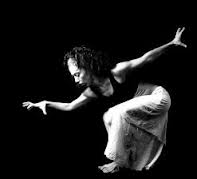 Right-brained children are highly emotive and highly sensitive. This is a good thing when it comes to expressing themselves through their creative outlets (art/photography, dance/ music, theater/showmanship, cooking/ gardening, building/electronics, math/ numbers, puzzles/mazes, fashion/sewing, computer/video games). This can be a difficult thing as it pertains to navigating life and relationships. They need emotion coaches!
Right-brained children are highly emotive and highly sensitive. This is a good thing when it comes to expressing themselves through their creative outlets (art/photography, dance/ music, theater/showmanship, cooking/ gardening, building/electronics, math/ numbers, puzzles/mazes, fashion/sewing, computer/video games). This can be a difficult thing as it pertains to navigating life and relationships. They need emotion coaches!
Our animalistic side is fight or flight. When a person reacts strongly, that base side shows itself instinctively. Mine is fight. It’s a natural reaction for me to push back strongly if someone erupts. As humans, though, we all have a higher thinking side to us. We have to learn to override the base fight or flight body instinct and think and proactively choose how to act instead of react. Helping 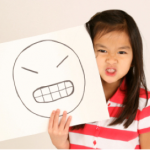 our children develop these skills is emotion coaching. It’s not easy, but well worth it. Our highly emotive and sensitive right-brained children need these skills. Our gifted, perfectionistic, highly aware children need it even more.
our children develop these skills is emotion coaching. It’s not easy, but well worth it. Our highly emotive and sensitive right-brained children need these skills. Our gifted, perfectionistic, highly aware children need it even more.
I read the post from the mother who compared her situation with her son to the Lanza situation. The mental health crisis aspect was spot on. I noticed her reactions to her son’s behaviors are often the same ones found in schools: punishments to externally motivate her son to change his behavior. Those are bandaids that only work superficially on some people sometimes temporarily. It doesn’t get to the underlying issue. I know it took a lot to keep her calm and even-toned voice. Helping her son label his emotion and access skills that had been discussed beforehand is emotion coaching. “I can see you’re frustrated. I can also see you’re still in the yellow zone. How can we get back to the green zone?” Having time constraints also pressures us to do something quickly. He needed to get to school, or you needed to get to work. It can all be so difficult.
There are many authors who help us learn these emotion coaching skills. See my list here. Look specifically into The Explosive Child or either of Mary Sheedy Kurcinka’s books. (Kurcinka taught me the traffic light analogy…red is when you’ve lost control and can’t be taught, green is when you are in control of your feelings and can be taught or pre-taught, and yellow is when you’re at that place of decision; you’re starting to melt down or be triggered, but you could access skills at this time to make a choice to go to green. These are the teaching emotion coaching moments.) How to Talk so Kids will Listen and Listen so Kids will Talk have great examples of how to change our focus. For serious anger needs, the parenting book How to Really Parent Your Child has a great chapter on this with a chart to guide your understanding or progress.
I’m grateful I can be home and that homeschooling offers me all the time I need to provide each of my children, including children like the one in the post, the individualized education they need. There is academics, but so much more, as I’ve found emotion coaching being essential from ages 5 to 10, and solidifying it between 11 and 13. Also, there’s sensory diets to be understood, social coaching, and mental health supports. Sometimes, academics is on the bottom of the list.
I have to laugh when the socialization question arises about homeschooling. It’s one of the key reasons I chose to homeschool over sending my child to school. The main focus in school is academics. Emotion coaching is non-existent and  mainly constitutes the punishment route. Social coaching amounts to simply being in the presence of other people; that’s certainly not enough for most people, especially some of our quirky, creative, or gifted children. Again, my children needed my constant guidance socially, especially from 5 to 10, and solidifying it between 11 and 13. Sensory needs met in school? Hardly. Mental health needs? Nope.
mainly constitutes the punishment route. Social coaching amounts to simply being in the presence of other people; that’s certainly not enough for most people, especially some of our quirky, creative, or gifted children. Again, my children needed my constant guidance socially, especially from 5 to 10, and solidifying it between 11 and 13. Sensory needs met in school? Hardly. Mental health needs? Nope.
Access to Mental Health Support
Right-brained people rally around and take to heart big picture ideals such as loyalty, compassion, integrity, truth, and hope. These triggers occur in their emotion house. When events occur revolving around these things, trauma can occur. As a left-brained, logical-oriented person, when the events occurred in Newtown, closely followed by a few more huge events related to mental health difficulties, I was greatly impacted. It created a temporary inability to focus and a feeling of being overwhelmed. Because of these traumas centering in my mind, my logic slowly sifted through the trauma and time centered me.
My right-brained family members share how the impact is different for them. These same traumas center in their minds as well, but it quickly transfers to their high emotive sensitivities in their hearts, or in their emotions. At this time, they feel strong emotions. The mind  begins to logically sort out the trauma via cognitive therapy strategies, but even if the mind is quieted, the feelings that had been evoked originally are not satisfied. Feelings can’t be talked down. They have to be accessed via another route. Cognitive, logical reasoning quiets the mind, but not the emotions. It can take quite a bit longer for time to ease the strong feelings of the heart.
begins to logically sort out the trauma via cognitive therapy strategies, but even if the mind is quieted, the feelings that had been evoked originally are not satisfied. Feelings can’t be talked down. They have to be accessed via another route. Cognitive, logical reasoning quiets the mind, but not the emotions. It can take quite a bit longer for time to ease the strong feelings of the heart.
This is an example of an external trauma. Now let me give you an example of an internal trauma as it relates to the creative mind. All of these high ideals they believe in are expected of others, but not as much as they expect it of themselves. Yet, no one is perfect. Right-brained, emotion-based, creative people often reflect upon themselves what they believe others see in them. For instance, to do well in a class, many right-brained people need to know their teacher likes them. If they believe their teacher doesn’t like them, they interpret that as lack coming from within themselves (internal perfectionism…see the book Strong Willed or dreamer?). The consequence can either be withdrawal, depression, or anxiety, or it can be acting out to reflect their translated view. “If she thinks I’m bad, in order to deal with not being of a high ideal, I’ll become the bad she thinks I am in order to avoid the pain of knowing I’m not who I feel I need to be.” It’s a form of self-preservation.
Now let’s take that torch of holding high ideals as important, and place a mental health disorder that’s triggered through a trauma that creates bipolar, for instance, onto a right-brained, creative, highly sensitive person. Let’s say they can’t function in a job or career development, especially the important development of their creative outlets, the center of being whole for a creative person. Integrity is dashed. Honor is lost. Now let’s say they try to do a minimal effort, but because a bipolar episode occurs, failure results. Hope, try, fail. Hope, try, fail. Everyone around them sees their talent and intelligence and creativity, but performance isn’t attainable because of their mental health disorder. Hopelessness sets in. Despair threatens. If despair wins, the consequence is possible suicide, drug/alcohol abuse, homelessness, jail for acting out, promiscuity, hospitalization, or at worse, a violent crime.
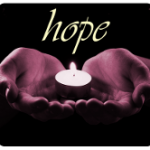 The key in this moment for serious mental health issues is someone holding their candle of hope for them as they struggle through how to live with their mental health disorder. If we just say they can live in the basement and play video games and try to exist, it’s not enough. The high ideal of knowing they can’t live with integrity, hope, honor, etc., wears away at them. A support person has to help them keep moving forward in some way, engaged in a creative cause or connected to others in a positive way. But, they need lots of support. Can appropriate volunteer work be found? Can a flexible part-time job be attained? Can some form of monetary independence be created? Can affordable housing near to a support person be acquired? At the same time, cognitive therapy addressing the mind frame of a creative person and their high ideals must be addressed. Acceptance of a lower level of living has to be achieved. Can this be found in our communities? In our state? In our country? I dare say not even close. Right now, alternative homeopathic supplements, meditative strategies, or pharmacological interventions work best for the generalized, lighter-weight difficulties. Yet, for serious cases, it’s a crap shoot. We need Hope Centers created to support the needs of mental health traumas. If we do, suicides, homelessness, jails, drug and alcohol abuse, and crimes will be lowered. We have our money put in all the wrong places.
The key in this moment for serious mental health issues is someone holding their candle of hope for them as they struggle through how to live with their mental health disorder. If we just say they can live in the basement and play video games and try to exist, it’s not enough. The high ideal of knowing they can’t live with integrity, hope, honor, etc., wears away at them. A support person has to help them keep moving forward in some way, engaged in a creative cause or connected to others in a positive way. But, they need lots of support. Can appropriate volunteer work be found? Can a flexible part-time job be attained? Can some form of monetary independence be created? Can affordable housing near to a support person be acquired? At the same time, cognitive therapy addressing the mind frame of a creative person and their high ideals must be addressed. Acceptance of a lower level of living has to be achieved. Can this be found in our communities? In our state? In our country? I dare say not even close. Right now, alternative homeopathic supplements, meditative strategies, or pharmacological interventions work best for the generalized, lighter-weight difficulties. Yet, for serious cases, it’s a crap shoot. We need Hope Centers created to support the needs of mental health traumas. If we do, suicides, homelessness, jails, drug and alcohol abuse, and crimes will be lowered. We have our money put in all the wrong places.
Conclusion
Not all right-brained people are destined for mental health issues or trauma. But I believe right-brained people are more prone to mental health differences such as anxiety, depression, bipolar, and other emotion-based expressions because the ingredients are all there that make up many core traits that can develop into difficulties. Highly emotive, imaginative, and creativity translate amazingly in the creative outlets. But these same traits, coupled with high ideals and high sensitivities create higher probability for trauma. Especially since most of our cultural practices neglect the needs of positive right-brained development.
Most of the current practices in psychology work more for the mind and not for the heart. We need more early treatment practices that ease triggered high emotions. We need to recognize how well-matched environments and interactions contribute greatly to a person’s well-being. If a creative, sensitive, or quirky child is constantly surrounded by people and expectations that don’t develop their creative needs, or respect their sensitive, emotional needs, or diminish their social place in the world, it takes its toll. Left-brained children have many of their greater needs met in the school and social environments that exist today, and right-brained children deserve the same opportunity.
Do I think it’s a high percentage of people who commit terrible crimes with these attributes I talk about in this post? No. Do I think too many people suffer from these circumstances? Yes. It’s not a singular event or product that results in suffering. It’s a process. There are several elements that I think contribute. Yet, with the right tools, these same elements can lift and support.

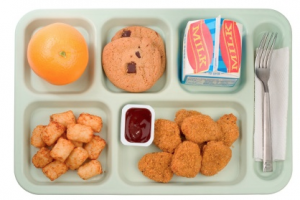
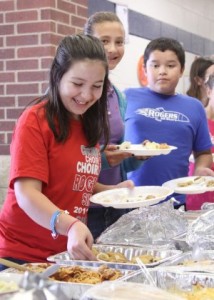
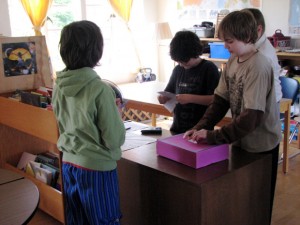
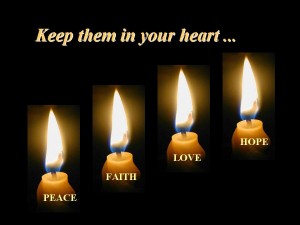





2 responses to “Supporting Creative Minds from Trauma”